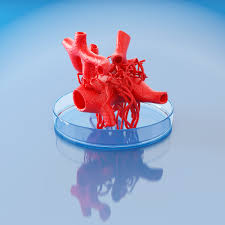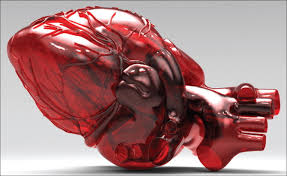
3D Printed Organs – When Will They Replace Donors?
Imagine a future where patients no longer wait months or years for organ transplants—or worry about rejection—because their new organs are printed layer by layer, customized just for them. This is the promise of 3D printed organs, a groundbreaking technology that could revolutionize medicine and save countless lives.
But how close are we to this reality? And will 3D printed organs truly replace human donors anytime soon? Let’s explore the science, progress, challenges, and potential of this incredible innovation.
🖨️ What Are 3D Printed Organs?
3D bioprinting uses specialized printers that deposit living cells and biomaterials in precise patterns to create functional tissue structures. Unlike traditional 3D printing with plastics or metals, bioprinting involves living “bioinks” that can grow and develop into tissues or even organs.
Scientists can print components like skin, cartilage, blood vessels, and now, even more complex organs such as kidneys and hearts in the lab.
🌟 The Promise of 3D Printed Organs
This technology promises to:
-
Eliminate donor waiting lists: Custom organs could be printed on demand, drastically reducing transplant wait times.
-
Reduce rejection risks: Organs printed using a patient’s own cells are less likely to trigger immune rejection.
-
Enable personalized medicine: Organs can be tailored to individual needs, improving compatibility and function.
-
Advance drug testing: Printed organs provide realistic models for testing new drugs without using animals.
🚀 Progress So Far
Researchers have made impressive strides:
-
Simple tissues: Skin grafts and cartilage implants are already in clinical trials.
-
Mini-organs (organoids): Tiny, simplified versions of organs grown from stem cells for research.
-
Complex tissues: Bioprinted heart patches and blood vessels have shown promising results in animal studies.
-
Full organ prototypes: Scientists have printed kidney and liver structures, though fully functional, transplant-ready organs are still in development.
⚠️ Challenges on the Path
Despite progress, several major obstacles remain:
-
Vascularization: Organs need networks of blood vessels to supply nutrients and oxygen. Printing these tiny vessels and ensuring they function correctly is a huge technical challenge.
-
Complexity: Organs are incredibly complex, with multiple cell types, tissues, and functions to replicate.
-
Longevity and integration: Printed organs must survive, grow, and integrate seamlessly into the patient’s body over time.
-
Regulatory hurdles: Safety and efficacy standards for bioprinted organs must be rigorously met before clinical use.
⏳ When Will 3D Printed Organs Replace Donors?
Experts estimate that while simple tissues may become widely available in the next 5-10 years, fully functional, transplantable organs like kidneys and hearts could take 10-20 years or more to reach routine clinical use.
In the meantime, hybrid approaches combining bioprinting with traditional transplants or regenerative medicine may bridge the gap.
🔮 The Future Outlook
The convergence of bioprinting with advances in stem cell biology, biomaterials, and artificial intelligence accelerates progress. Some visionary projects even explore:
-
Printing entire organs on demand.
-
Customized organs for space missions or remote locations.
-
On-site printing in hospitals for emergency transplants.
The impact on healthcare could be profound, making organ failure a far less daunting diagnosis.
🧠 Final Thought
3D printed organs hold immense promise to transform transplantation, but replacing human donors entirely is still a work in progress. With continued research and investment, the day when we print organs as easily as we print documents may be closer than you think.
Until then, supporting organ donation remains vital, while science paves the way for a future where 3D printed organs save lives worldwide.
